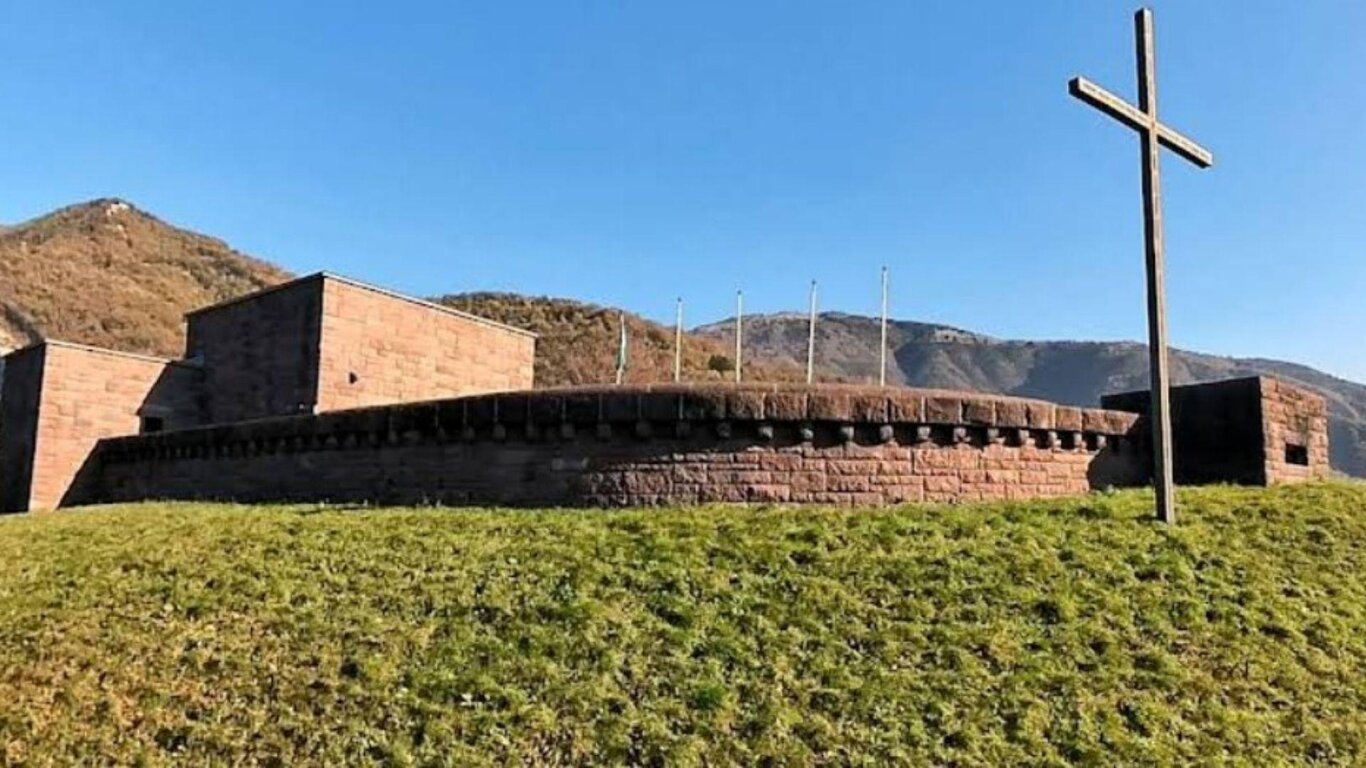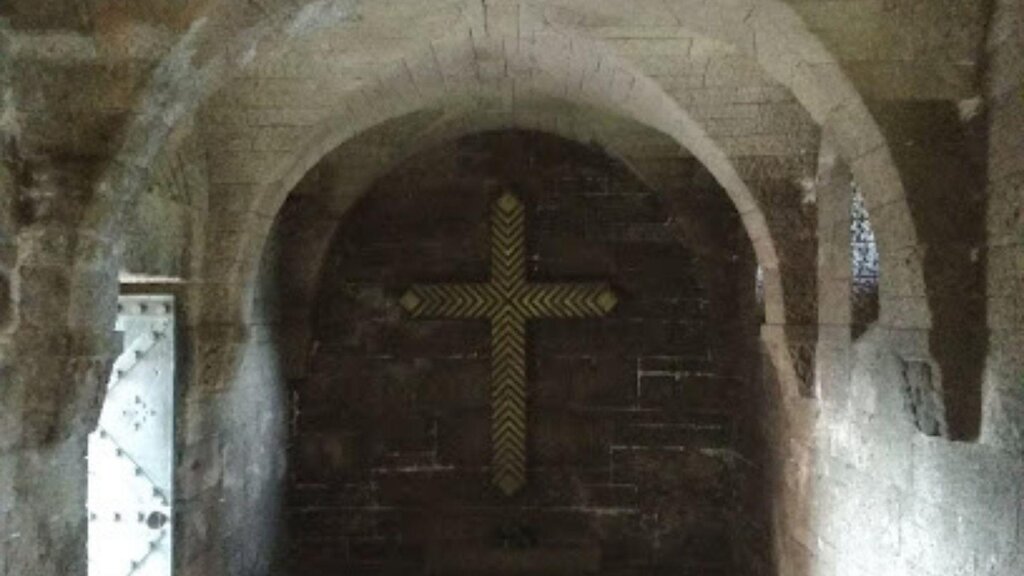The Totenburg of Quero, literally "fortress of the dead," is one of the most important German memorials abroad. It was designed by the architect Robert Tischler and built between 1936 and 1939 to provide a dignified burial for the remains of 3,463 German and Austro-Hungarian soldiers who fell in the battles on the Grappa between 1917 and 1918, coming from various existing war cemeteries in the area. The small morainic hill of Col Maor was chosen, where a military observatory already existed, positioned dominantly over the course of the Piave. The main entrance is at the caretaker's house that opens onto a covered patio, from which a path branches out leading through meticulously cared-for meadows to the summit of the hill where the structure stands, strictly oriented from north to south like a ship stranded towards its fate.
One may wonder what the reason was for the positioning of the Totenburg in Quero. In November 1917, the Austro-Hungarian troops, engaged between the Piave and Monte Tomatico, were ready to launch an important offensive that would involve the occupation of Quero and subsequently the Monfenera-Monte Tomba line with the aim of then descending into the plains. As noted in the memoirs of General Zedtwiz of the 55th Austro-Hungarian division, "we cannot take Quero if we have not first conquered Cornella," the focal point of one of the fiercest battles that the Grappa can recall was that small mountain at whose feet the Totenburg stands, Monte Cornella indeed. On November 16, 1917, the Austro-German forces launched the attack against the infantry of the Como Brigade who defended themselves like lions, fully aware that they would eventually be eliminated, slowing the enemy's advance by several days. Their heroic action allowed the Italian rear guards to reorganize, which was a crucial aspect as it contributed significantly to the final outcome of the war. Despite their courageous actions, Quero fell into enemy hands on November 17. The losses were heavy on both sides, perhaps for this reason the Totenburg was erected in this location between Quero and Piave as a symbol of one of the bloodiest chapters of the First World War. Many years have passed since those events, but the Totenburg is still there, vigilantly reminding us of them.


